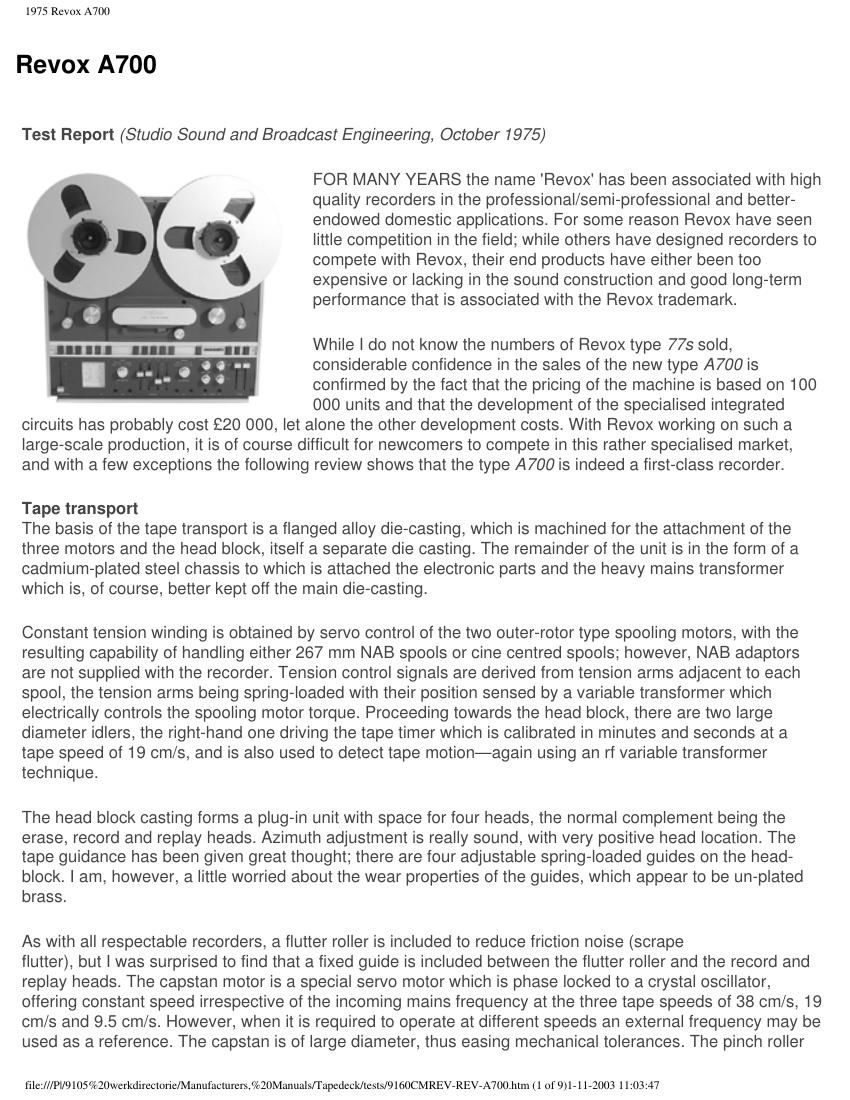Revox A 700 Review
This is the 9 pages manual for Revox A 700 Review.
Read or download the pdf for free. If you want to contribute, please upload pdfs to audioservicemanuals.wetransfer.com.
Page: 1 / 9

This is the 9 pages manual for Revox A 700 Review.
Read or download the pdf for free. If you want to contribute, please upload pdfs to audioservicemanuals.wetransfer.com.
